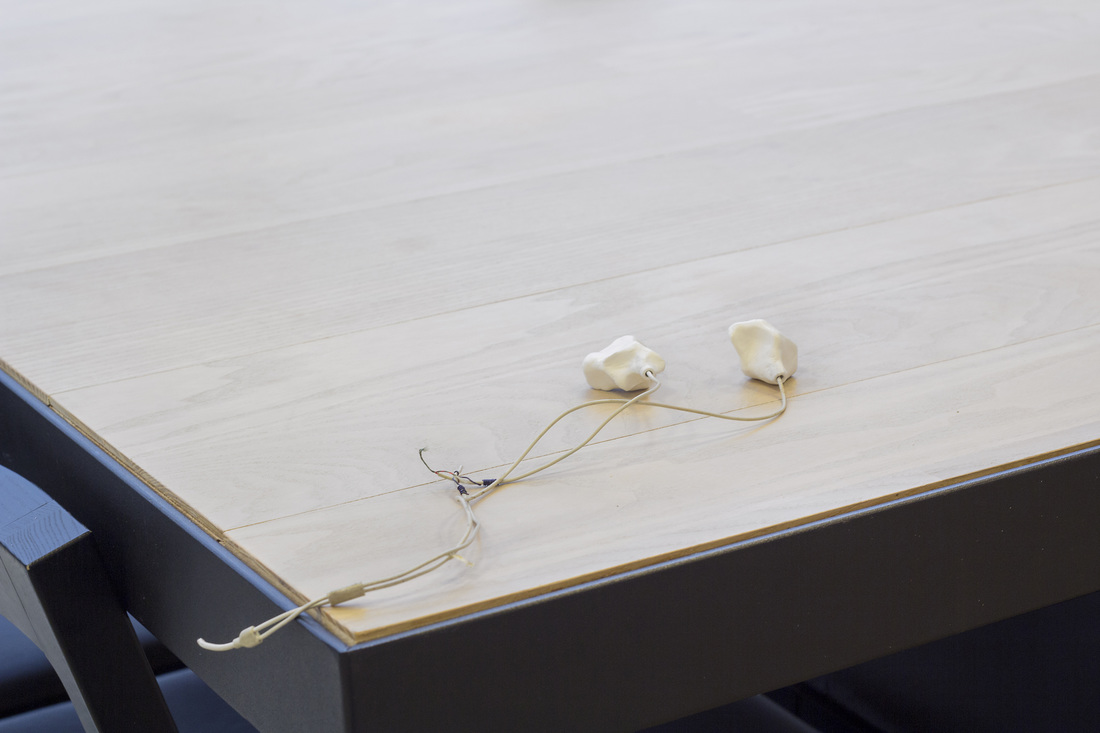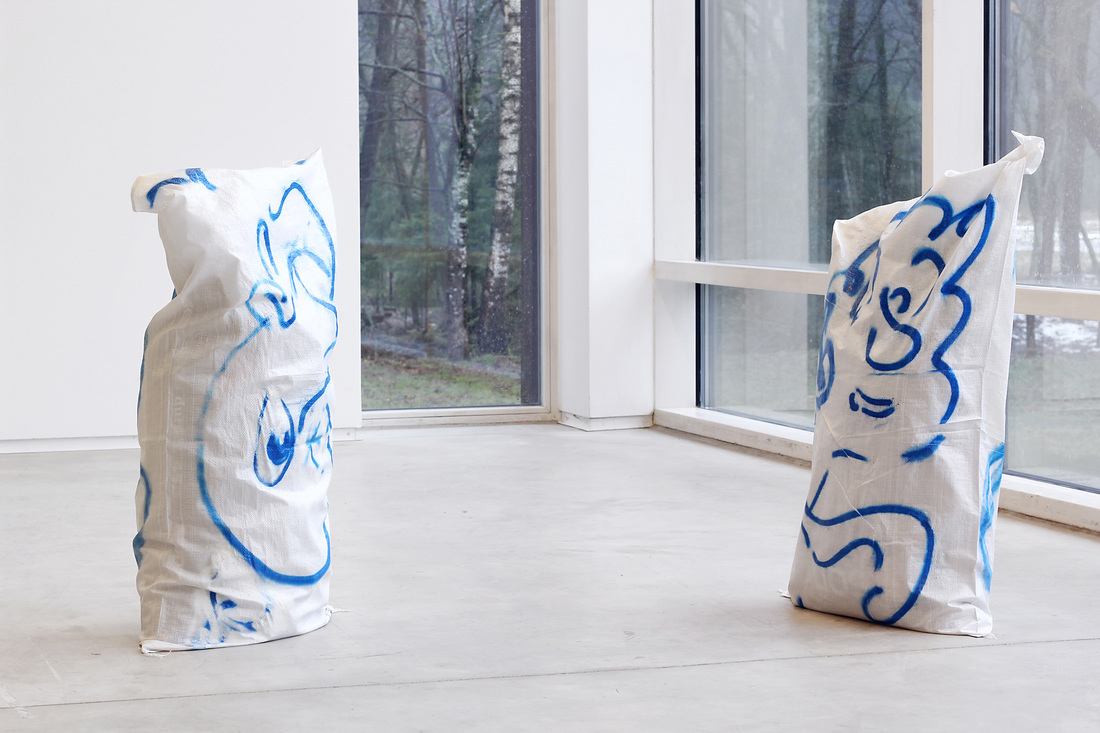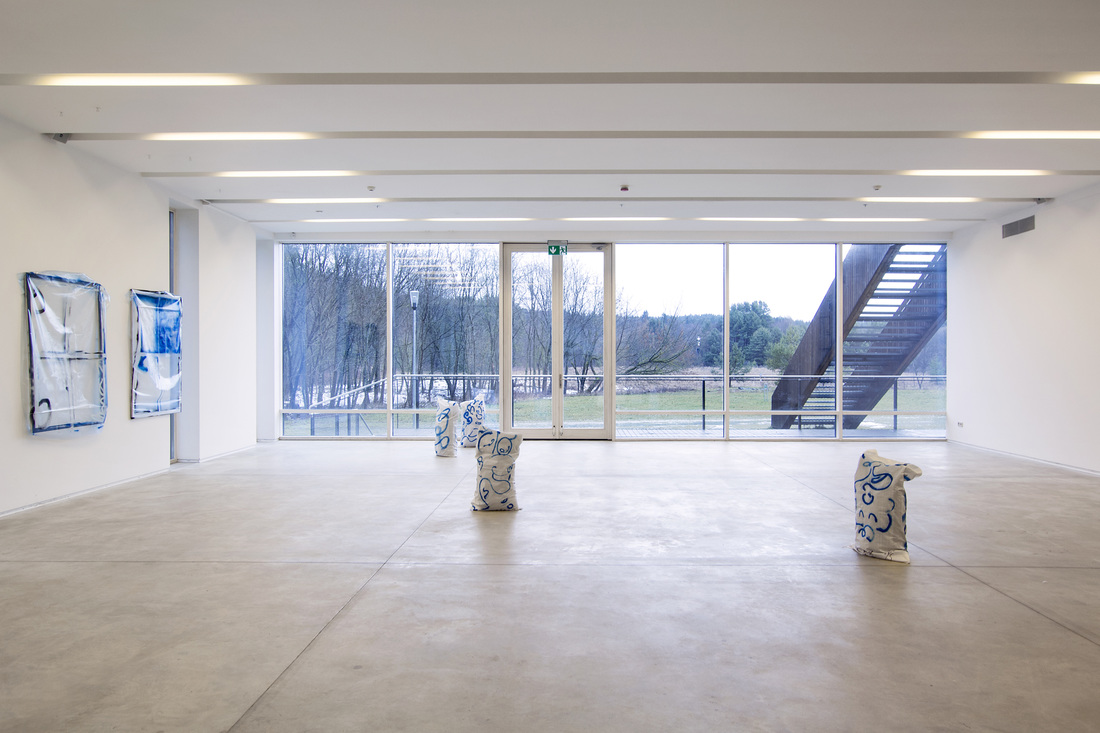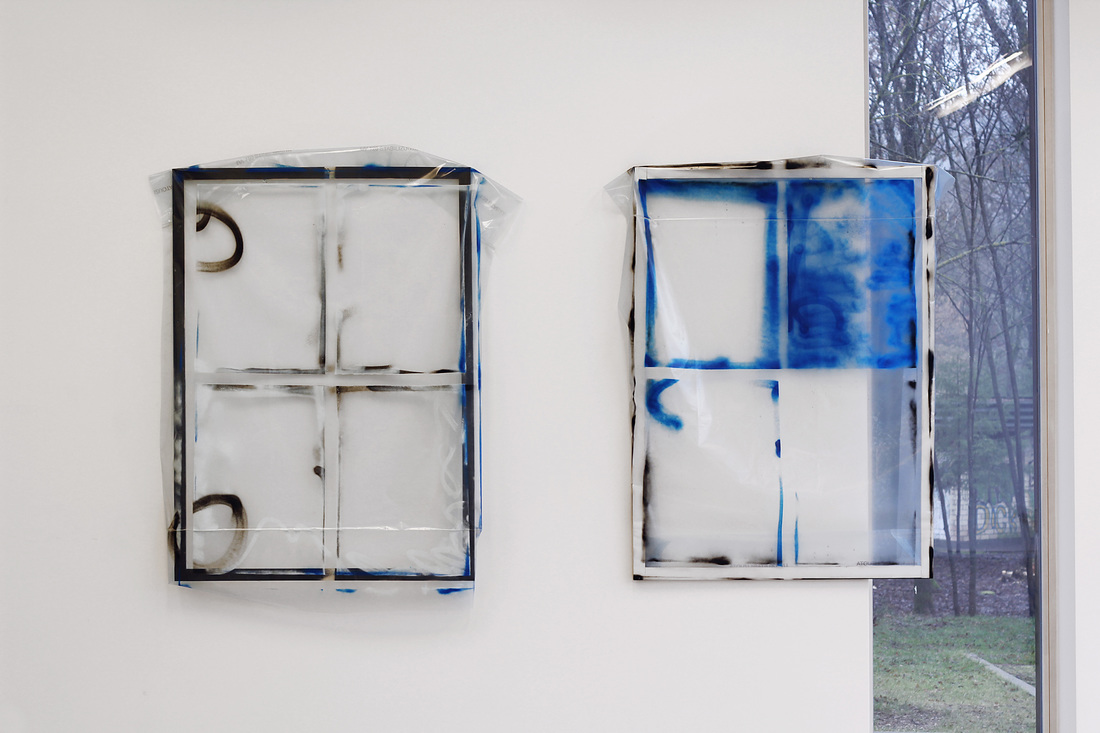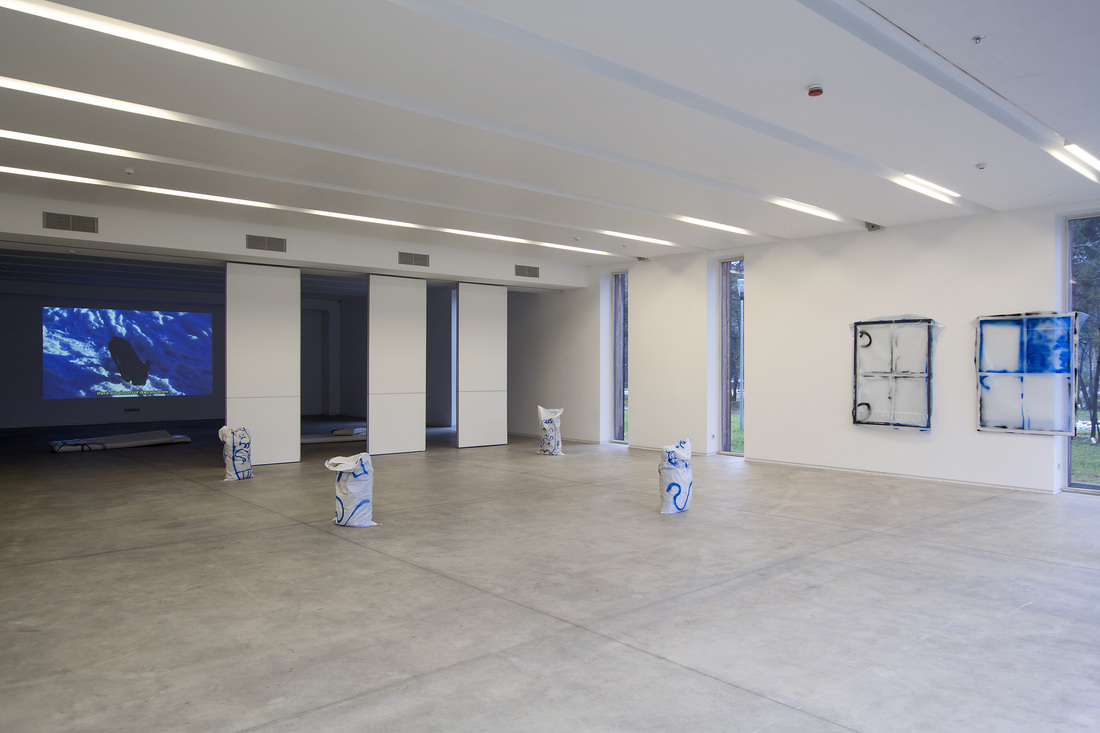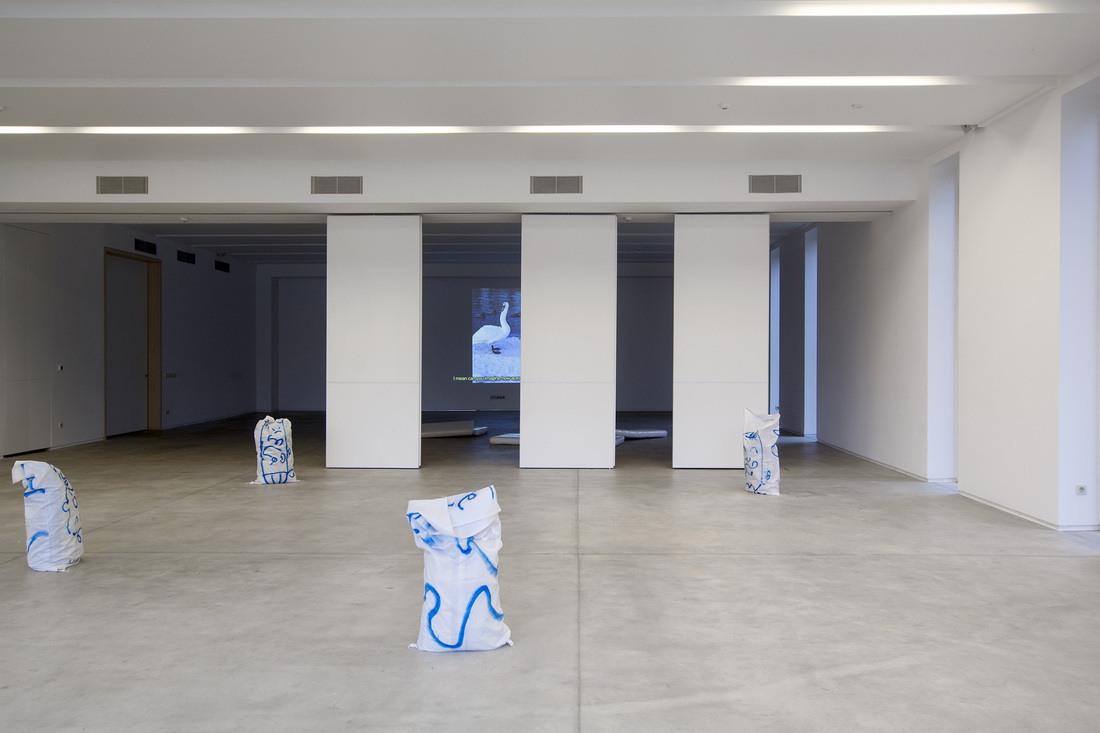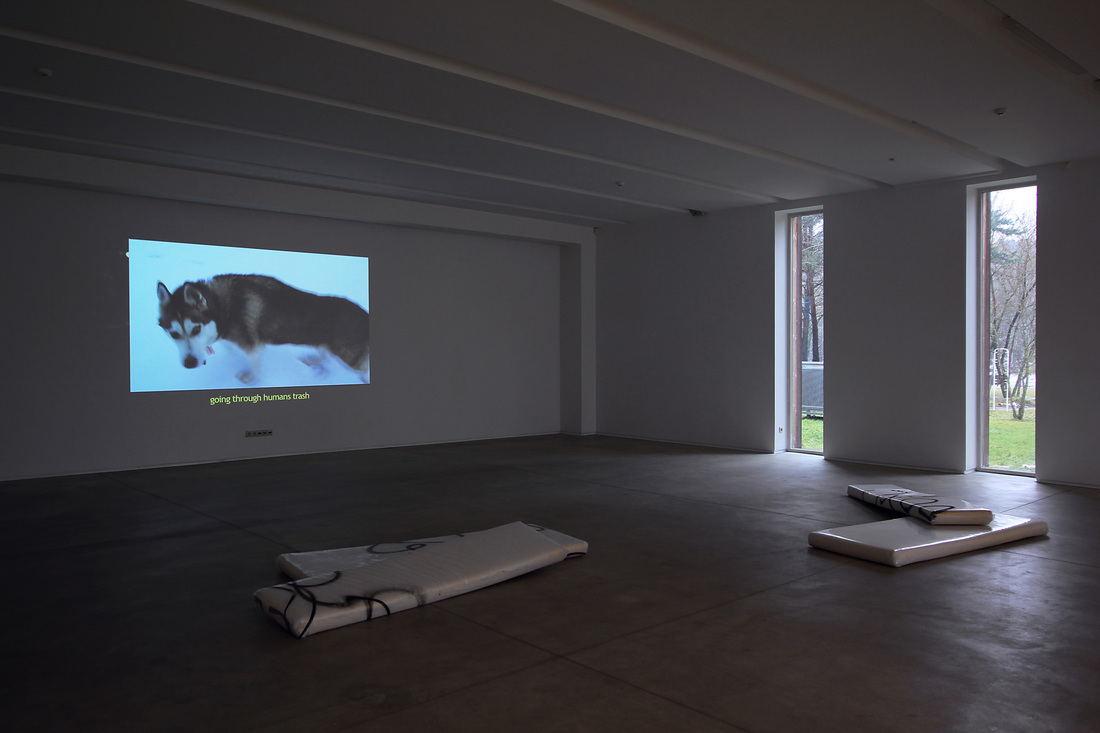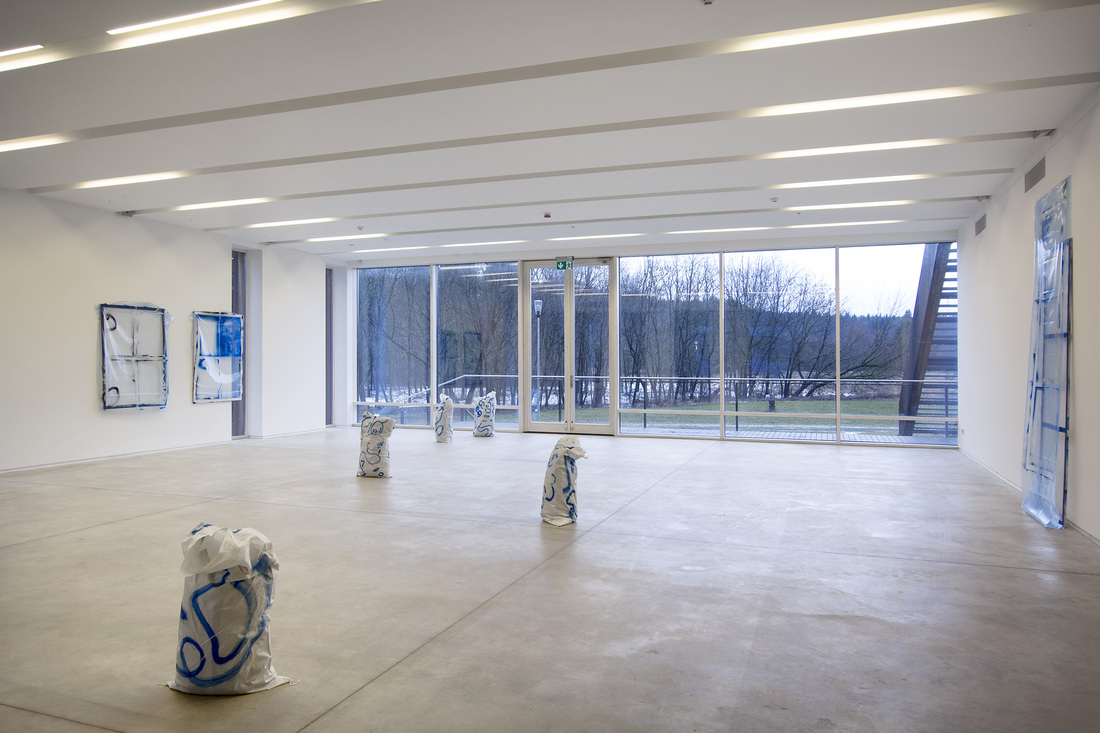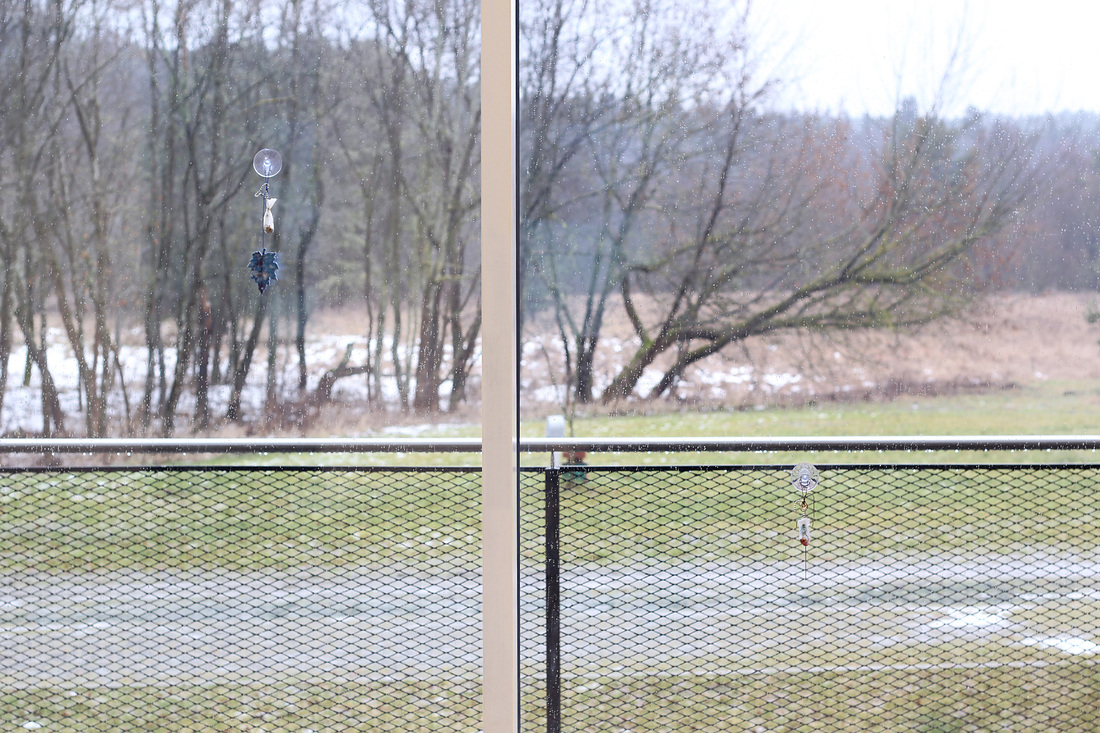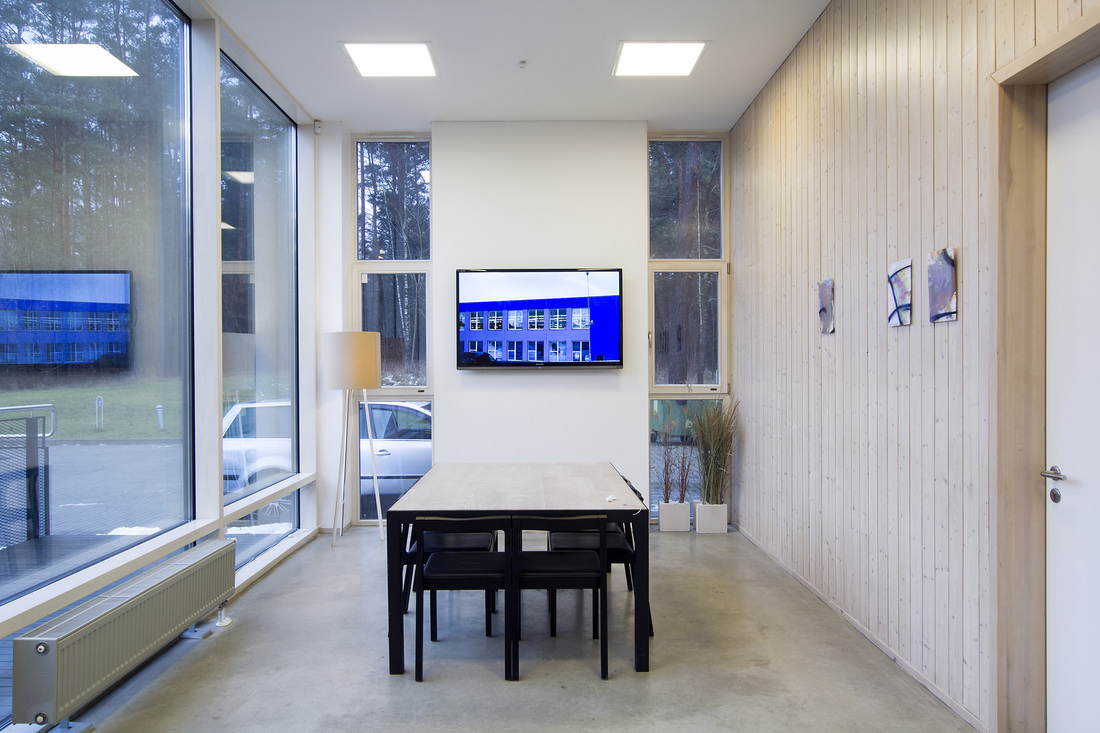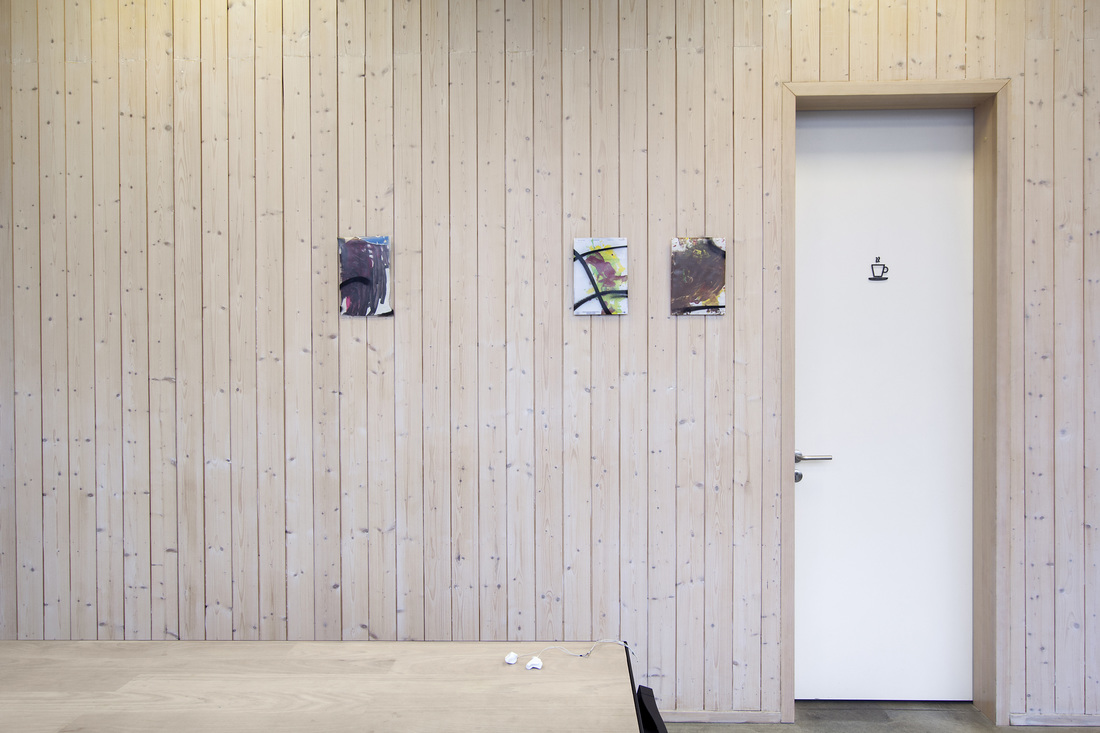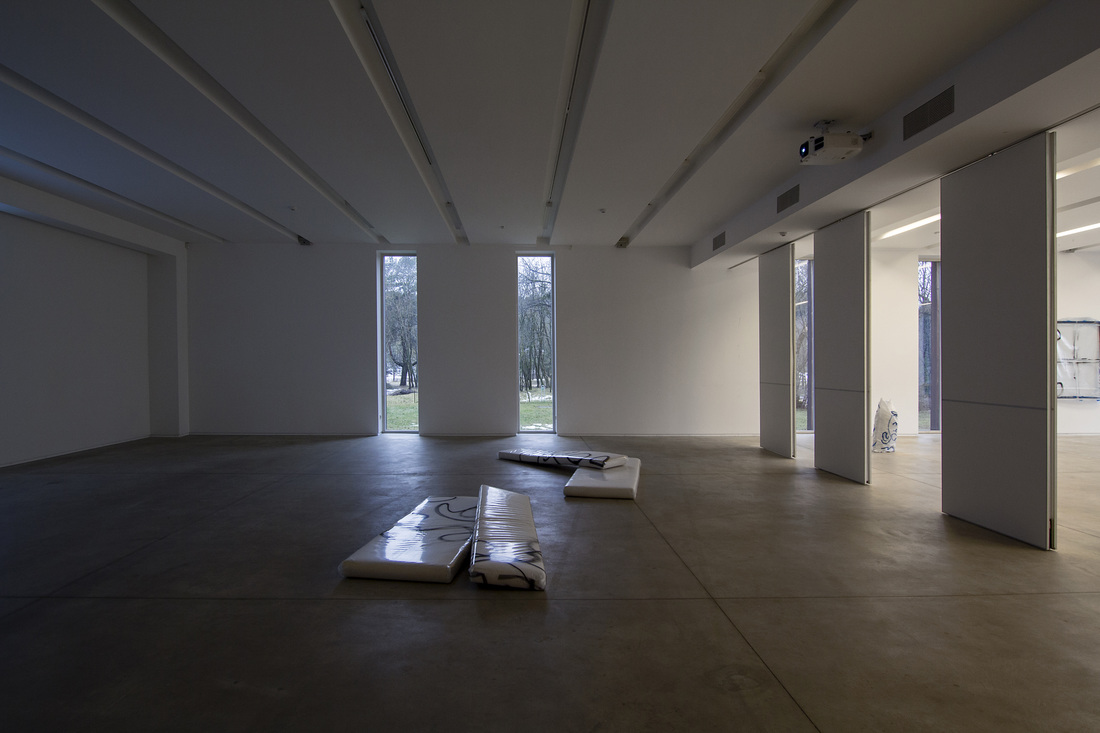| newartcenter.info |
|
VILNIUS AT WORK
A THOUSAND FRIENDSInterview with Antoine Donzeaud
by Romuald Demidenko |
I checked up on young French artist Antoine Donzeaud, knowing that he would be in Vilnius at the same time as I was. He has used most of his time working on his ‘presentation’ which in the end turned out to be an exhibition held in spacious room in the premises of Rupert. I’ve noticed he uses his smartphone whenever he appeared.
Antoine Donzeaud, Skype me later, 2016
You've been in Vilnius for a couple weeks now and you're just about to open the exhibition. Tell me about the idea and your observations that you’ve collected. What has emerged as your objective?
I came without any very precise idea because I didn't know what i was going to find here or if I was going to get a studio space and be able to produce some new works. My first idea was just to come with a video camera and look around in order to find out if I could do something that would fit my practice or that I could make use of for my future show. I didn't really have any specific project and to be honest I didn't even know what I was going to do. When I got here I wanted to figure out the building, the space of the gallery and its surroundings and when I started filming outside and it gave me some ideas, in the continuation of what I was doing before - the investigation of the domestic space and the connection with people living here and their animals. And so it's started from there. With the animals it started almost like a joke; you know you have all these videos of cute animals on YouTube and social media. People are posting videos with their cats or dogs and it might be perceived as corny or stupid but it's a part of our interactions with each other. I thought that it might be interesting to combine it with what I do in general. In my previous projects I worked with formal considerations on painting and the relationship it shares with sculpture. In this case I wanted to inject some kind of narrative, either personal or more generational like derived from popular culture.
I came without any very precise idea because I didn't know what i was going to find here or if I was going to get a studio space and be able to produce some new works. My first idea was just to come with a video camera and look around in order to find out if I could do something that would fit my practice or that I could make use of for my future show. I didn't really have any specific project and to be honest I didn't even know what I was going to do. When I got here I wanted to figure out the building, the space of the gallery and its surroundings and when I started filming outside and it gave me some ideas, in the continuation of what I was doing before - the investigation of the domestic space and the connection with people living here and their animals. And so it's started from there. With the animals it started almost like a joke; you know you have all these videos of cute animals on YouTube and social media. People are posting videos with their cats or dogs and it might be perceived as corny or stupid but it's a part of our interactions with each other. I thought that it might be interesting to combine it with what I do in general. In my previous projects I worked with formal considerations on painting and the relationship it shares with sculpture. In this case I wanted to inject some kind of narrative, either personal or more generational like derived from popular culture.
Antoine Donzeaud, A Thousand Friends, installation view, 2016, Rupert, Vilnius
Antoine Donzeaud, A Thousand Friends, installation view, 2016, Rupert, Vilnius
There's lot of music playing around you whenever you work as I've noticed. What is this connection with music?
Sometimes it helps me focus. I tend not to work in silence most of the time. It’s a sort of a studio process. It helps me build up some kind of atmosphere, like a soundtrack. I was even thinking of making a soundtrack for the show. Maybe something will come up. I am carrying my little speaker at all times as you've seen. I can be very picky about music but I think my inspiration also takes a lot from a very mainstream music like Pop or R'n'B. The materials that I use are also quite ordinary, very common, most of you could find at Home Depot, like plastic, earth, wood. And I guess this is quite the same when it comes to music - there's no elitism. It's always interesting to catch up some of the aesthetics that are around. I didn't know anything about the space when I've arrived so I started from scratch. I wasn’t planning on adding any formal objects or paintings in the show. But then I started this routine of taking walks everyday and I could see a lot of houses under construction with features like open frames and panels and tarps used repeatedly. I filmed it and I thought it would make sense to establish a dialogue with the video by adding some parts of these materials or something that resembles it. Even in a really raw form, more like a subtle evocation.
Sometimes it helps me focus. I tend not to work in silence most of the time. It’s a sort of a studio process. It helps me build up some kind of atmosphere, like a soundtrack. I was even thinking of making a soundtrack for the show. Maybe something will come up. I am carrying my little speaker at all times as you've seen. I can be very picky about music but I think my inspiration also takes a lot from a very mainstream music like Pop or R'n'B. The materials that I use are also quite ordinary, very common, most of you could find at Home Depot, like plastic, earth, wood. And I guess this is quite the same when it comes to music - there's no elitism. It's always interesting to catch up some of the aesthetics that are around. I didn't know anything about the space when I've arrived so I started from scratch. I wasn’t planning on adding any formal objects or paintings in the show. But then I started this routine of taking walks everyday and I could see a lot of houses under construction with features like open frames and panels and tarps used repeatedly. I filmed it and I thought it would make sense to establish a dialogue with the video by adding some parts of these materials or something that resembles it. Even in a really raw form, more like a subtle evocation.
Antoine Donzeaud, A Thousand Friends, installation view, 2016, Rupert, Vilnius
Antoine Donzeaud, A Thousand Friends, installation view, 2016, Rupert, Vilnius
'You can waste a lot of time on some not necessarily important stuff in the social media, but it's still a powerful asset to communicate with other people in order to pass on some precise information'
I'd like to ask you a little bit about the way you do your work and make use of your time during the day. Do you spend a lot of time in front of the screen or do you have any methods that help you be more efficient in spite of being always online?
Yes. There's a lot of work in front of the screen, you know. In Paris like here in Vilnius also, a big part of the day is about doing stuff with the computer or other portable tools, communicating with people for work, pleasure or answering emails. And also for me when I work on videos there is editing on the computer. But I try to divide my time between doing this and going to the studio and just being in the space. Sometimes not even making any work but just being there and this is probably how ideas or forms emerge. I am not as rigorous as some who keep strict schedules but I go at least to the studio every day. A big part of my practice is studio-based. The space is also Exo Exo, the non-profit organisation that I am co-running. That's why I’m spending so much time there. Most of the time I produce pieces and works for my shows there. When it's the time to open a new project I clean up the whole space. I've built a wall to make a sort of storage space to put all my stuff and have the whole studio free to host the exhibitions. It’s quite gymnastic sometimes but it's a good process. It helps clear your mind when you tend to accumulate so much stuff that keeps piling up in the corners.
Yes. There's a lot of work in front of the screen, you know. In Paris like here in Vilnius also, a big part of the day is about doing stuff with the computer or other portable tools, communicating with people for work, pleasure or answering emails. And also for me when I work on videos there is editing on the computer. But I try to divide my time between doing this and going to the studio and just being in the space. Sometimes not even making any work but just being there and this is probably how ideas or forms emerge. I am not as rigorous as some who keep strict schedules but I go at least to the studio every day. A big part of my practice is studio-based. The space is also Exo Exo, the non-profit organisation that I am co-running. That's why I’m spending so much time there. Most of the time I produce pieces and works for my shows there. When it's the time to open a new project I clean up the whole space. I've built a wall to make a sort of storage space to put all my stuff and have the whole studio free to host the exhibitions. It’s quite gymnastic sometimes but it's a good process. It helps clear your mind when you tend to accumulate so much stuff that keeps piling up in the corners.
Antoine Donzeaud, A Thousand Friends, installation view, 2016, Rupert, Vilnius
Antoine Donzeaud, A Thousand Friends, installation view, 2016, Rupert, Vilnius
I could see that you're always using your phone regardless of anywhere you are at the moment. Do you think it can be overwhelming at some point?
Yeah, especially with my provider, who lets me use 3G everywhere across Europe (laughs). I don't know, I mean gradually it became a part of who we are now and dictates the way we can interact with other people. Some are distant to that. I try to use it as a tool. You can waste a lot of time on some not necessarily important stuff in the social media and so on. But it's still a powerful asset to communicate with other people in order to pass on some precise information. I’m not sure how much of its presence I want to acknowledge in my practice but I'm really into non-traditional ways of working so it helps me in a way.
Yeah, especially with my provider, who lets me use 3G everywhere across Europe (laughs). I don't know, I mean gradually it became a part of who we are now and dictates the way we can interact with other people. Some are distant to that. I try to use it as a tool. You can waste a lot of time on some not necessarily important stuff in the social media and so on. But it's still a powerful asset to communicate with other people in order to pass on some precise information. I’m not sure how much of its presence I want to acknowledge in my practice but I'm really into non-traditional ways of working so it helps me in a way.
Antoine Donzeaud, A Thousand Friends, installation view, 2016, Rupert, Vilnius
Antoine Donzeaud, A Thousand Friends, installation view, 2016, Rupert, Vilnius
You've said that you used to make your installations out of raw and inexpensive materials. Is it common for artists these days?
I find a certain beauty in these cheap materials somehow, and plastic is really my favourite, as there is so much you can do with it and I also like the concepts it brings: protection, conservation, heat control or transparency. In a more general way I think this way of working goes with today's economical and social context. First, to me it's just not right to make pieces with a high production cost you know? It just sounds wrong, but that's besides the point. Also now, independent spaces, or even galleries, can't put so much money into production so you just find other ways to make the show happen. Just as we do at Exo Exo - we offer a great space to the artists but usually very low or even no budget. But that's the rule and everyone deals really well with it and often come up with really strong proposals. I would say that it comes from the desire to make something happen above the rest. We don‘t want to wait, we just make it happen.
I find a certain beauty in these cheap materials somehow, and plastic is really my favourite, as there is so much you can do with it and I also like the concepts it brings: protection, conservation, heat control or transparency. In a more general way I think this way of working goes with today's economical and social context. First, to me it's just not right to make pieces with a high production cost you know? It just sounds wrong, but that's besides the point. Also now, independent spaces, or even galleries, can't put so much money into production so you just find other ways to make the show happen. Just as we do at Exo Exo - we offer a great space to the artists but usually very low or even no budget. But that's the rule and everyone deals really well with it and often come up with really strong proposals. I would say that it comes from the desire to make something happen above the rest. We don‘t want to wait, we just make it happen.
Antoine Donzeaud, A Thousand Friends, installation view, 2016, Rupert, Vilnius
Antoine Donzeaud, A Thousand Friends, installation view, 2016, Rupert, Vilnius
Do you think it's different from what was back in the ‘90s? Does technology and working online come along with less budget?
Yes, definitely. It seems like in the ‘90s there was more money to be thrown at the windows and communication was so different. There were no blogs that relayed shows, no Instagram etc. Shows were made for a physical audience whereas now we think primarily about the documentation. Nowadays working online and using this new set of tools has changed a lot of things. It’s easier to produce things, sometimes even in a costless way and also it allows the artists to be independent way sooner regarding their production and how they want to share it and market it.
Yes, definitely. It seems like in the ‘90s there was more money to be thrown at the windows and communication was so different. There were no blogs that relayed shows, no Instagram etc. Shows were made for a physical audience whereas now we think primarily about the documentation. Nowadays working online and using this new set of tools has changed a lot of things. It’s easier to produce things, sometimes even in a costless way and also it allows the artists to be independent way sooner regarding their production and how they want to share it and market it.
|
Antoine Donzeaud has graduated from l’Ecole Nationale Supérieure d’Art de Nice, Villa Arson. He lives and works in Paris, where he runs the project space Exo Exo with curator Elisa Rigoulet.
|
|
The conversation with Antoine Donzeaud is part of the project Vilnius at Work, newartcenter.info's residency at Rupert, Vilnius.
|
Images courtesy of Antoine Donzeaud
and Rupert, Vilnius
Thank you to Antoine Donzeaud & Naomi Langan
and Rupert, Vilnius
Thank you to Antoine Donzeaud & Naomi Langan
PLATFORM FOR NEW COMMUNICATION
|
© 2016 PNC NEWARTCENTER.INFO
|
